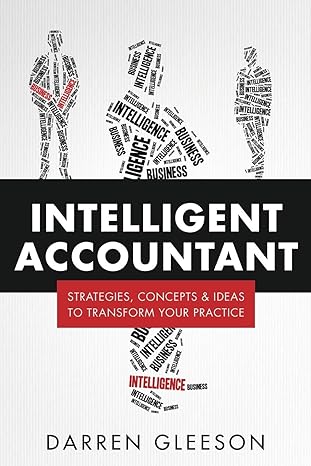Answered step by step
Verified Expert Solution
Question
1 Approved Answer
Plantwide versus Departmental Rates, Product-Costing Accuracy: Activity-Based Costing Ramsey Company produces speakers (Model A and Model B). Both products pass through two producing departments. Model
Plantwide versus Departmental Rates, Product-Costing Accuracy: Activity-Based Costing Ramsey Company produces speakers (Model A and Model B). Both products pass through two producing departments. Model A's production is much more labor-intensive than that of Model B. Model B is also the more popular of the two speakers. The following data has been gathered for the two products: Product Data Model A Model B Units produced per year 10,000 100,000 Prime costs $147,000 $1,470,000 Direct labor hours 143,000 320,000 Machine hours 17,000 203,000 Production runs 40 50 Inspection hours 800 1,100 Maintenance hours 10,000 90,000 Overhead costs: Setup costs $243,000 Inspection costs 218,500 Machining 627,500 Maintenance Total 300,000 $1,389,000 Required: 1. Compute the overhead cost per unit for each product by using a plantwide rate based on direct labor hours. (Round to two decimal places.) Plantwide rate: per DLH. Model A: Model B: overhead cost per unit overhead cost per unit 2. Compute the overhead cost per unit for each product by using ABC. (Round rates and unit overhead costs to two decimal places.) Model A: overhead cost per unit Model B: overhead cost per unit Note: Be sure to complete both tables below. Activity Setups Inspections Machining Maintenance Setups Inspections Machining Maintenance Total overhead + Units produced Overhead per unit Driver Activity Rate per per per per Overhead assignment Model A Model B 3. Suppose that Ramsey decides to use departmental overhead rates. There are two departments: Department 1: (machine intensive) with a rate of $4 per machine hour and Department 2: (labor intensive) with a rate of $1 per direct labor hour. The consumption of these two drivers is as follows: Model A Model B Department 1 Machine Hours 8,000 190,000 Department 2 Direct Labor Hours 130,000 250,000 Compute the overhead cost per unit for each product by using departmental rates. (Round to two decimal places.) Model A: Model B: per unit per unit hours for machine-intensive departments and overhead cost assignment for both products. The departmental rates cost A well 4. CONCEPTUAL CONNECTION Using the activity-based product costs as the standard, comment on the ability of departmental rates to improve the accuracy of product costing. Did the departmental rates do better than the plantwide rate? A common justification is to use not clearly more wrong than the plantwide rate; they are wrong in a do better than the plantwide rates. hours for labor-intensive departments. Using activity-based costs as the standard, we can say that departmental rates the ABC method while the plantwide rate costs A well direction. The departmental rates the accuracy of the the ABC method. However, the rates of difference are very close. Looking at it this way, department costs are
Step by Step Solution
There are 3 Steps involved in it
Step: 1

Get Instant Access to Expert-Tailored Solutions
See step-by-step solutions with expert insights and AI powered tools for academic success
Step: 2

Step: 3

Ace Your Homework with AI
Get the answers you need in no time with our AI-driven, step-by-step assistance
Get Started


